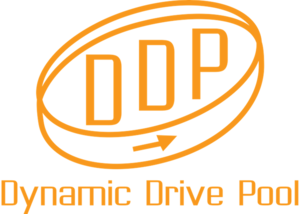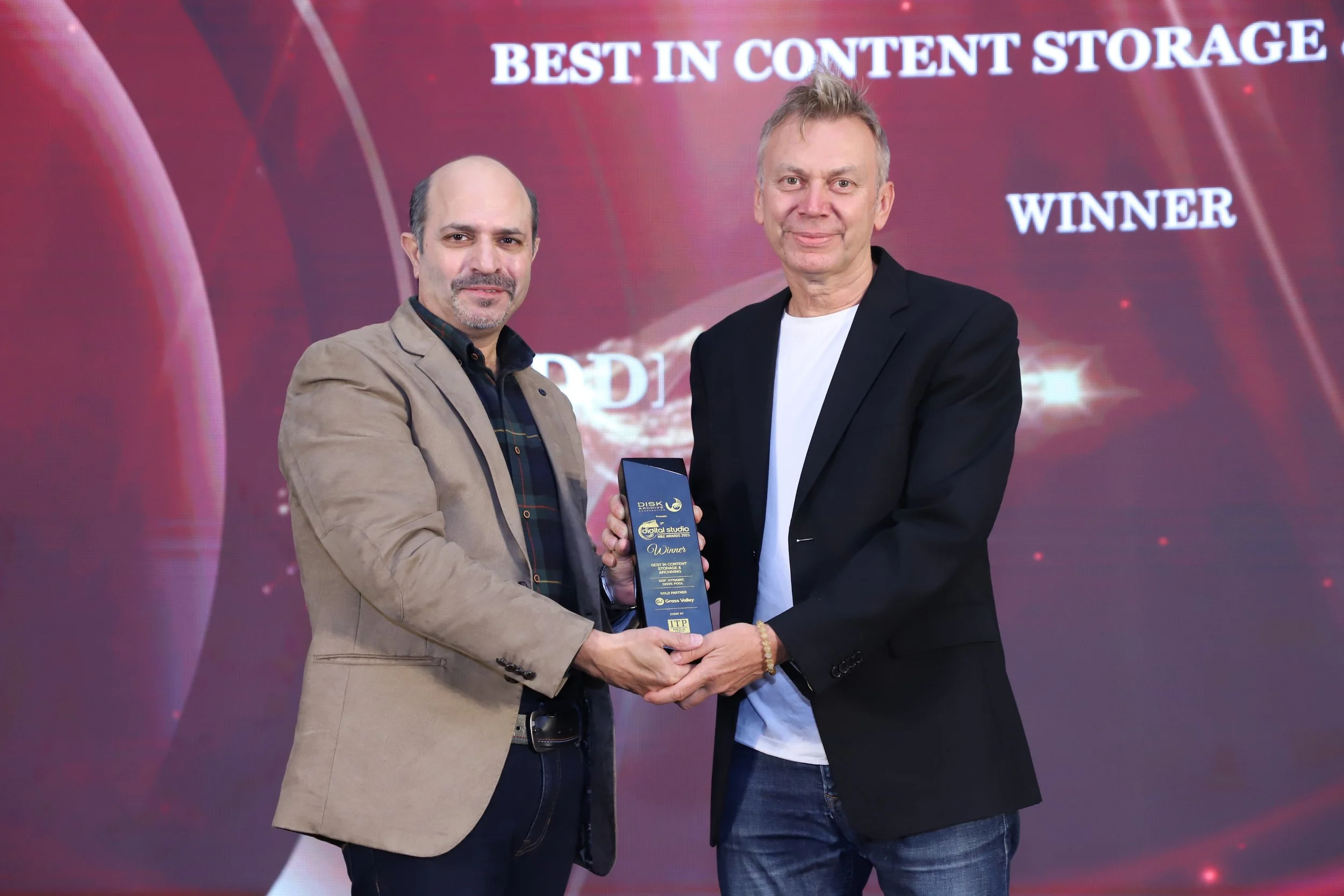Following its success at the Dubai Broadcast Expo CabSAT in May, where DDP received the award for Best Storage Solution, the company has once again been recognized for its innovation and leadership in the industry.
At the Broadcast India Show in Mumbai, under the auspices of Digital Studio magazine, DDP was honored with the award for Best Content Storage and Archiving Solution. This achievement further reinforces DDP’s commitment to delivering cutting-edge, reliable, and high-performance storage solutions for the global broadcast and media community.
The Dynamic Drive Pool (DDP) storage system is built on a unique foundation: the A/V FS (Audio Video File System), developed in-house by Ardis Technologies BV in the Netherlands. Unlike generic shared storage, A/V FS was designed specifically for media and entertainment workflows, delivering the performance, flexibility, and reliability that video and audio professionals demand.
One File System – Unlimited Volumes
Traditional shared storage systems create multiple volumes, each with its own file system. Moving files between them actually means copying data, which consumes bandwidth, clogs networks, and delays workflows.
DDP eliminates this by offering a single file system. Within A/V FS, users can create Folder Volumes — directories that behave like independent volumes but remain part of the same file system. Files can be moved instantly between Folder Volumes with no copying, no delay, and no bandwidth saturation. Ideal for applications like Avid Media Composer, Archive or MAM/PAM solutions.
Flexible Data Locations
Because Folder Volumes can be linked to different data locations, operators have complete flexibility in managing performance and cost. For example, one Folder Volume can record to HDDs, another to SSD, or even to both simultaneously. Data recorded on HDD can later be played back from SSD, giving flash-level performance without the expense of storing everything on SSD. No other storage vendor offers this capability.
File-Based SSD Caching (Including Project Caching)
A major strength of DDP is its approach to caching. While other vendors use block-level caching or require full projects to be duplicated to SSD, DDP implements file-based SSD caching directly within A/V FS. Frequently accessed or performance-critical files are cached on SSD automatically, while less critical files remain on HDD.
Caching can be set to operate in two ways:
Automatic (On-Demand): Files are cached on SSD as they are used. They remain there until space is needed, at which point older files are released back to HDD (unless they already exist there).
Pinned: Files remain in SSD cache until manually deleted, ensuring critical material always benefits from SSD speed.
For larger productions, the same mechanism applies at the project level. Known as Project Caching, this allows entire projects to be assigned to SSD while still remaining part of the unified file system. This delivers the capacity of HDDs combined with the predictable, high performance of SSDs — without duplication or extra management. Both file-based and project-level caching are built into A/V FS and can be managed automatically or manually, with full visibility of SSD usage.
Advanced Mobility and Rebalancing
Another unique feature of DDP is the ability to record data on one storage unit in the field, then bring that storage back to the facility and rebalance data across storage groups. This flexibility is ideal for OB vans, live event recording, and remote productions where media must move seamlessly between environments.
Ethernet SAN – Built for Performance
Beyond caching and flexibility, DDP is an Ethernet-based SAN that guarantees predictable performance and delivers up to 5.5 times the speed of traditional NAS systems. Importantly, all SAN licenses are unlimited and free, since A/V FS is entirely developed and maintained by Ardis Technologies. This makes DDP not only a technically advanced storage platform but also one of the most cost-effective.
Why It Matters
A/V FS – built for media workflows, not adapted IT storage.
Folder Volumes – instant moves, no wasted bandwidth.
Data locations – per-folder control of HDD, SSD, or both.
File & Project Caching – unified mechanism for file-level and project-level SSD performance, automatic or pinned, with visibility tools.
Ethernet SAN – predictable performance, up to 5.5× faster than NAS.
Unlimited SAN licenses – free for all users.
Mobility and rebalancing – flexible for field and studio workflows.




